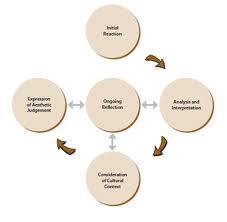We know that clear Overarching Learning Goal statements written in student friendly language is essential for both students and parents to be able to access a clear understanding of what students need to know and be able to do at the end of a unit of study. In the previous series of posts, we have looked into a variety of resources and policy documents that should help in the process of writing these statements. The following resources should be gathered so that you and your writing team can begin the process of crafting the statements:
- your collaborative brainstorming around what you and your team value as a teaching and learning team
- your notes and brainstorming that was generated when looking through the front matter of the curriculum
- the big ideas and essential learning found in your curriculum
- your notes that connect the instructional content with the assessment protocols from Growing Success (2010) (e.g. learning skills and habits of mind)
- the connections that you have made to modern learning competencies
- the connections that you have made to the school context
When writing your Overarching Learning goal statements, there are some basic guidelines that you should consider. First of all, you need to keep in mind that you should be creating three but no more than five pithy statements that encompass the overall learning that students need to demonstrate by the end of the learning period. Secondly, it is also important to recognize that these statements need to be able to encompass the required content and skills learning as outlined by the curriculum document, as students must successfully demonstrate the requirements of all the overall expectations for a course. Thirdly, students should be able to access the big ideas within the overarching learning goals because they are the ones that are being assessed. Even if the students are not entirely clear on the exact meaning of the goal, or struggle to envision what it looks like, at the beginning of the learning cycle, they should be articulated in such a way that students are going to be able to access them. Remember that the overarching learning goal statements that you are writing is about student learning and needs to be manageable for students. The aim is to provide meaningful context for what the students want to learn and need to learn.
At this point, I am going to be using my own experience as much as possible of the work that my departmental team and I have been working on for the past several years. I say this because it is essential that you recognize that this is a process and not a destination in improving student experience in your classroom. Even when you are “done” writing the overarching learning goal statements, there is ongoing reflective work and course or program improvement plans that can be developed to implement the OLGs effectively.
With my writing team, we have three teachers: my visual arts colleague, my media arts colleague and myself. Within the department there are other teams: dance, drama and music. These teachers however do not have teaching partners within the building, so they have worked with colleagues from other schools from around the district. Initially we started the journey all going down the same path, but with different ideas of what overarching learning goals should look like and how to encompass them in the day to day experiences with students, based on the subject areas we teach. Much of the initial work that we had done we talked about with each other over impromptu meetings over lunch or as we talked with each other before the school day started. Through this ongoing process of reflection and dialogue we were surprised to see that at the end of our writing process, the overarching learning goals across the department were in fact aligned with each other. As a result, we now have overarching concepts that unify not just individual courses and subject pathways within the arts, but also a whole departmental approach that we use for the experiences of all the students who opt to take dance, drama, media art, music or visual art. I must emphasize that the unity in thinking is based on the early discussions and collaborative team work that we fostered together as a team.
The categories under which all of our overarching learning goals include: creation, accuracy, purposeful decision making / critical thinking, expanding vocabulary and cultural connections. I am going to spend a few minutes going through the connections that I have made to the process discussed in prior posts, and also expand on how I envision the overarching learning goals to adapt as we begin to prepare for our first revision cycle to further refine these statements.
CREATION: I responsibly create refined and meaningful artworks.
In our early discussions as a team, one of the key concepts that emerged time and time again is that we wanted students to graduate from The Arts department at our school, was that they needed to be meaning makers. It is essential, for us that students can not only interpret their world and experiences, but making meaning out of those interpretations. Meaning making we believe requires a different set of skills than those primarily concerned with interpretation. Understanding meaning through analysis and interpretation is only part of the process, which we do through what is called the Critical Analysis Process.


A second core idea that was valued through team discussion is that the works that students create need to be refined. In the case of visual arts, this means that artworks are “exhibition ready” – they are worthy of being put up on display for others to see. This related to the creative process once again, which is a such a significant part of what happens in the classroom on a daily basis. We based this idea that students need to develop the capacity for resilliance in the face of challenges. Persistence, as a habit of mind, is at the core of creative and critical thinking. For the Arts, to determine whether a student has become resilient, we are able to look at how well they move through the creative and critical analysis processes in order to develop and refine the appearance of the artwork, but also over the course of the semester how a student is able to create increasingly complex ideas in the work they produce.
The third key element here is the word “responsibly” which we took directly from the learning skills from Growing Success (2010). Responsibility can take many forms in the creation of art – any where from how to use visual research ethically, to use and care of materials and of course the impact that art has on the environment. By referencing responsibility in this Overarching Learning Goal Statement, we are acknowledge one of the overall expectations in our curriculum.
C3. Responsible Practices: demonstrate an understanding of responsible practices related to visual arts.
-AVI4M0, 2010 Revised Visual Arts Curriculum, Ontario
Responsibility is also tied explicitly to our school mission, in which we are promoting environmental leadership and stewardship. Students are encouraged to think about how they consume materials and the lasting impact that their art making may have on the environment in their choice of creative media.
It is not necessary for each of the learning goals to connect to all the resources and brainstorming that you had completed previously. The statements are about encompassing the rich learning that is possible, and to provide purpose and context for the learning that we ask students to engage in on a regular basis.
Before you begin writing your own Overarching Learning Goal Statements, review the notes that you have created. Sort the ideas that were generated to find commonalities between the ideas from all of the different resources. Once you have the ideas sorted, label them: what is the unifying concept that ties all of the thinking together in this category. From there, you will have the foundation for your statements.
- What are the central ideas that emerge from your discussions, reflections and investigations? (Knowledge)
- When might students be learning of these core ideas (e.g. activities, current assessments, etc.) , but not necessarily have this learning reflected in their learning of the overall expectations? (Prediction)
- Of the ideas that you and your team has generated, which ideas are most important? Rank your ideas from most to least important, and be prepared to justify your ranking to your colleagues. (Analysis)
- How might these bigger ideas be connected, either in terms of the knowledge that students are expected to know or the skills they are required to perform? (Synthesis)











